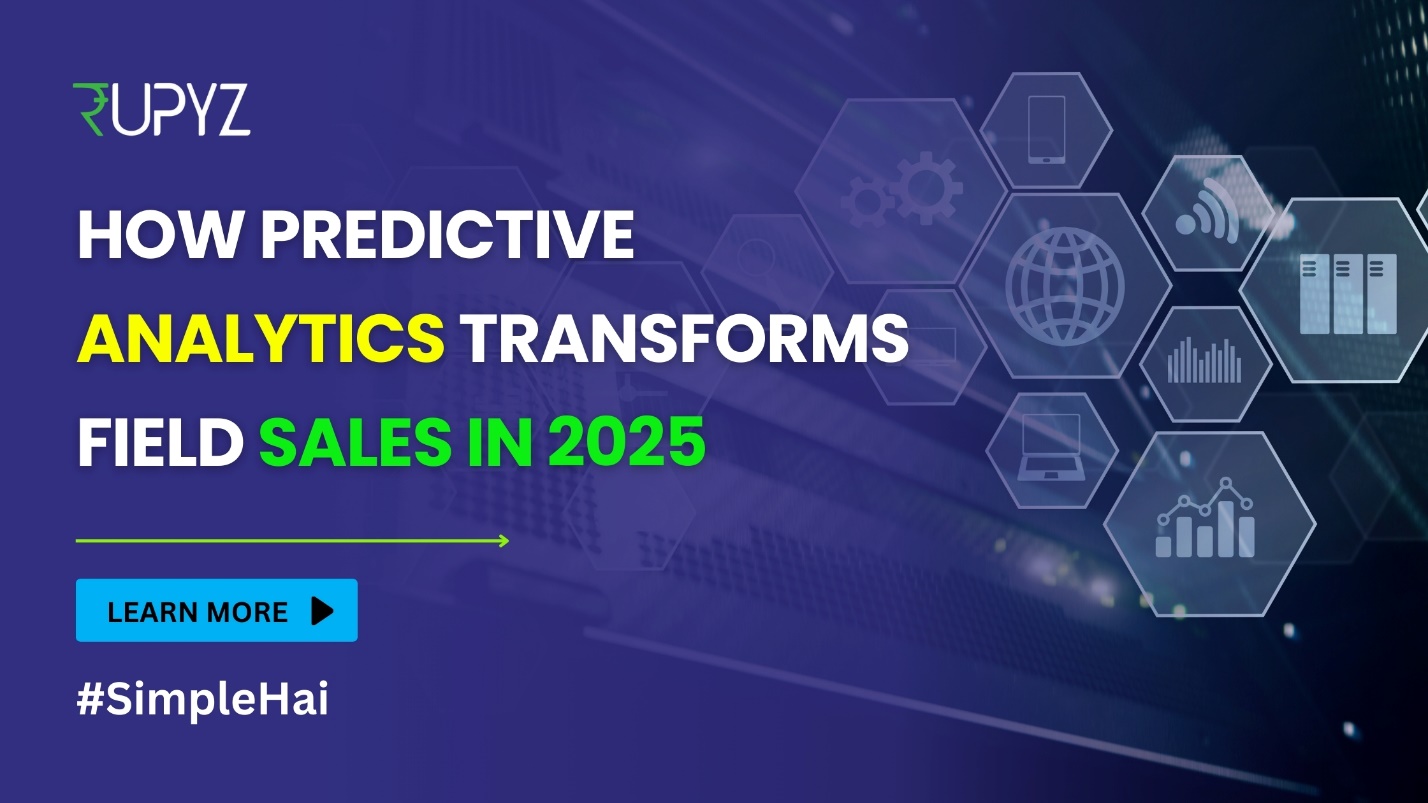
How Predictive Analytics is Revolutionizing Field Sales Strategies in 2025
Understanding Predictive Analytics in Field Sales
How Are Field Sales Strategies Evolving in 2025?
1. Lead Scoring and Prioritization
2. Sales Forecasting and Revenue Prediction
3. Route Optimization for Field Sales Representatives
4. Personalized Sales Approaches
5. Enhancing Customer Engagement and Retention
Rupyz Customizable TAGS leverage Predictive Analytics to provide real-time insights and smarter targeting in Field Sales. By analyzing historical data and sales patterns, TAGS help identify high-potential opportunities, optimize routes, and prioritize customer engagement. This results in increased productivity, better decision-making, and improved conversion rates for sales teams on the ground.

Key Benefits of Predictive Analytics in Field Sales
1. Improved Sales Performance
2. Real-Time Data-Driven Decisions
3. Enhanced Customer Relationships
4. Cost Savings and Efficiency
5. Competitive Advantage
Challenges of Implementing Predictive Analytics in Field Sales
- Data Quality: Predictive models rely on high-quality, accurate data. Without clean, up-to-date information, the insights generated by predictive analytics may be inaccurate, leading to misguided decisions.
- Employee Training: Sales teams need to be trained to use predictive analytics tools effectively. Without the proper training, sales reps may not fully leverage the power of predictive insights, reducing the effectiveness of the technology.
- Integration with Existing Systems:> Integrating predictive analytics with CRM systems, sales platforms, and other tools can be complex. Businesses need to ensure that their systems are compatible and that data flows seamlessly between platforms.
The Future of Predictive Analytics in Field Sales
Frequently Asked Questions (FAQ)
1. Optimized Route Efficiency
Predictive analytics leverages geo-tagging, traffic patterns, and historical sales data to design efficient routes for field sales representatives. This minimizes travel time, reduces fuel consumption, and ensures coverage of high-priority locations.
2. Real-Time Adjustments
By integrating real-time data such as weather conditions and traffic updates, predictive models dynamically adjust routes to avoid delays and ensure timely deliveries. This agility helps FMCG brands respond proactively to unforeseen circumstances.
3. Enhanced Coverage
Advanced algorithms analyze market demand and customer purchasing patterns to prioritize routes that maximize coverage of high-demand areas. This ensures that products reach priority outlets with precision, boosting sales productivity.
4. Cost Reduction
Predictive analytics helps reduce operational costs by optimizing fuel usage and avoiding redundant routes. Additionally, it minimizes risks related to vehicle downtime through predictive maintenance insights.
5. Improved Customer Satisfaction
Efficient route planning ensures faster deliveries and consistent availability of high-demand products in stores, leading to higher customer satisfaction and loyalty.
6. Centralized Monitoring
Sales control centers powered by predictive analytics provide real-time visibility into route performance metrics like visit completion rates and product penetration. Managers can use these insights to improve team productivity across regions.
Predictive analytics is a game-changer for FMCG sales route planning, empowering brands to operate efficiently while meeting dynamic consumer demands. By adopting these tools, companies can achieve measurable improvements in operational efficiency, cost savings, and customer engagement.
1. Demand Forecasting
Predictive analytics uses historical sales data, seasonal trends, and external factors like weather or economic conditions to forecast demand. This allows businesses to identify the best time to launch products when consumer interest is at its peak. For example, launching summer-specific items during early spring ensures readiness for seasonal demand.
2. Identifying Market Trends
By analyzing social media sentiment, online searches, and competitor activities, predictive tools spot emerging trends. Companies can use these insights to time their launches ahead of competitors, capturing market attention early and establishing leadership.
3. Optimizing Campaign Timing
Predictive models analyze previous campaign performance to suggest optimal days, times, or seasons for product launches. This ensures that marketing efforts align with periods of high consumer engagement, maximizing ROI.
4. Reducing Risk of Failure
Launching a product prematurely or too late can result in poor adoption rates. Predictive analytics mitigates this risk by providing data-driven insights into the readiness of the market and potential customer responses.
5. Aligning with Consumer Preferences
Predictive tools segment audiences based on preferences and purchasing behaviors, enabling businesses to time launches when target consumers are most likely to engage. For instance, predictive analytics might suggest launching a luxury product during holiday seasons when consumers are more inclined to spend.
Conclusion
Transform your B2B Business
We would love to give a comprehensive walk through of our system & demonstrate how we can contribute to your growth story.
Book A Demo

